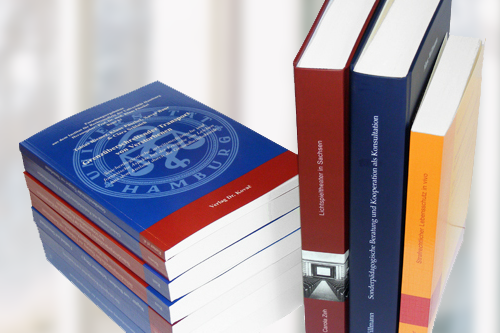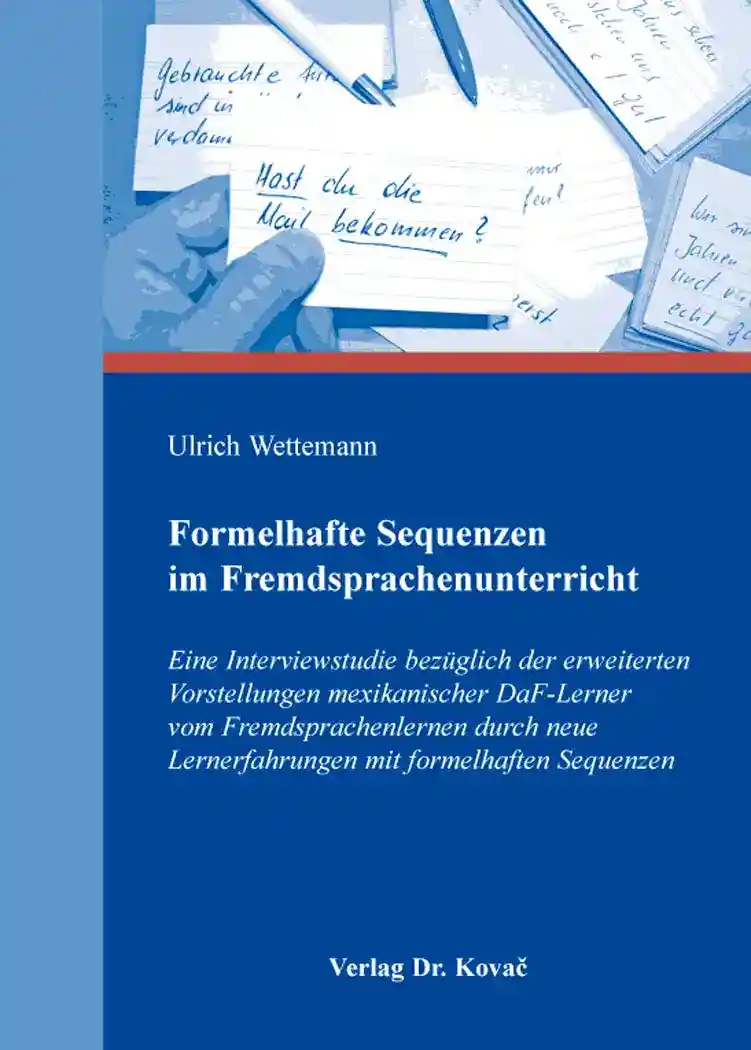Ulrich WettemannFormelhafte Sequenzen im Fremdsprachenunterricht
Eine Interviewstudie bezüglich der erweiterten Vorstellungen mexikanischer DaF-Lerner vom Fremdsprachenlernen durch neue Lernerfahrungen mit formelhaften Sequenzen
LINGUA – Fremdsprachenunterricht in Forschung und Praxis, volume 35
Hamburg 2016, 264 pages
ISBN 978-3-8300-9060-1 (print) |ISBN 978-3-339-09060-7 (eBook)
Rezension
[...] Insgesamt bietet das Buch einen interessanten Einblick in einen möglichen Umgang mit formelhaften Sequenzen (und den damit verbundenen Aufwand, solange sie in den Lehrwerken nicht als solche thematisiert werden) sowie in das Umdenken, das bei den meisten Teilnehmern während des ca. viermonatigen Zeitraums der Studie stattfand. Auch der Erfolg in Bezug auf die Kornmunikationsfähigkeit, von dem einige Teilnehmer berichteten, scheint die Beschäftigung mit formelhaften Sequenzen geradezu einzufordern. [... So] bietet das Buch interessante Anknüpfungspunkte einerseits für in der Praxis tätige Sprachlehrende als auch andererseits für die Ausbildung solcher, sodass vor allem eine Einbindung in entsprechende Seminare von DaF/DaZ-Studiengängen durchaus lohnenswert scheint.
About this book deutschenglish
The importance of formulaic sequences in L2- acquisition has been highlighted in academic literature. The more sequences an L2 learner can fall back upon, the faster and more free of errors is the learning process. However, since many questions about the definition, choice and imparting of formulaic sequences remain unanswered, there are still no clear and systematic approaches to imparting such sequences in L2 acquisition.
The following thesis approached this complex field of research by first working out the basic principles of the theory of second language acquisition and then specifying these for imparting of formulaic sequences. Similarly, formulaic sequences were defined from the pedagogic perspective and selected on the basis of the level and the aims related to each level. An approach to impart these sequences could then be developed, which laid the groundwork for the empirical study.
The selected method was an explorative-interpretative approach, in order to gain first insights into the as yet unknown field of research. The aim was to determine how and to what extent the idea of the learners about foreign language learning could be changed or influenced by new learning experiences and the work with formulaic sequences. In order to test this, adult GFL learners were taught for five months using the developed approach and the appropriate formulaic sequences were imparted to them.
Guided interviews conducted at the beginning and end of the study served as the source of raw data. These interviews delivered new insights into the object of study as well as new information about imparting formulaic sequences. According to the statements made by the learners, working with formulaic sequences had a very positive effect on the foreign language learning process.
Furthermore, these statements were used to derive didactic recommendations for foreign language learning. The research project can thus be seen as a contribution to promote the imparting of formulaic sequences in the foreign language classroom.
Keywords
Alternatives FremdsprachenlernenAutomatisierungChunksDaFDaZDeutsch als FremdspracheDeutsch als ZweitspracheFormelhafte SpracheFremdsprachenerwerbFremdsprachenunterrichtPhrasemeSprachbewusstheitSprachlehrforschungIhr Werk im Verlag Dr. Kovač

Möchten Sie Ihre wissenschaftliche Arbeit publizieren? Erfahren Sie mehr über unsere günstigen Konditionen und unseren Service für Autorinnen und Autoren.
